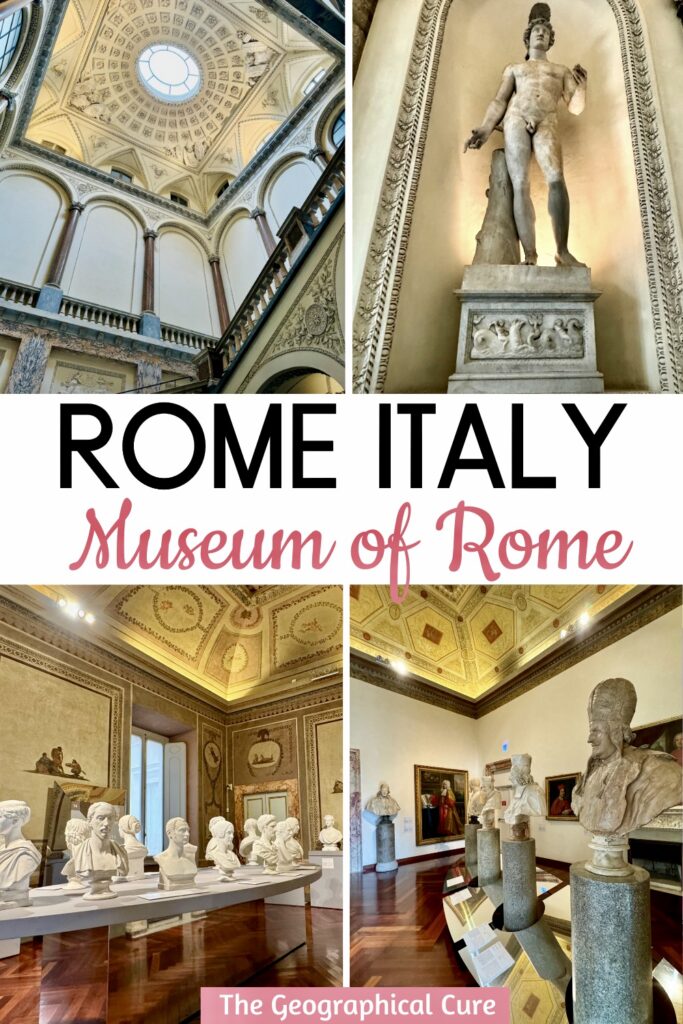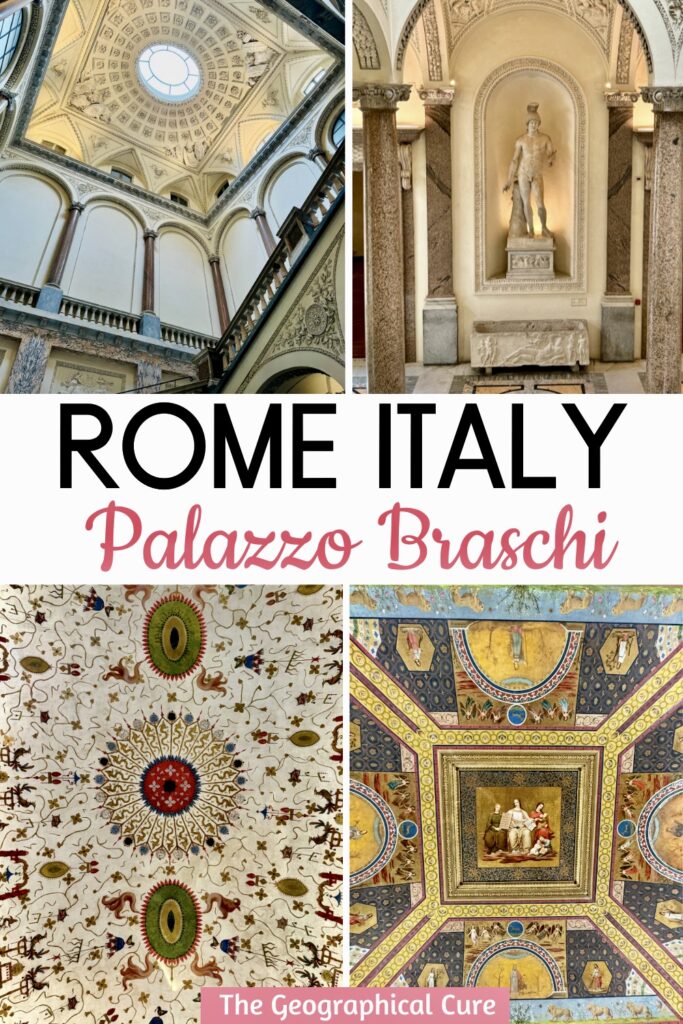The Palazzo Braschi is a Rome-centric museum that tells the story of the city. It offers a deep dive into Rome’s history, culture, and artistic achievements from the Middle Ages to the 20th century.
This niche museum is housed in a stunning Neoclassical palace. It was constructed under the direction of architect Cosimo Morelli, who was commissioned by Pope Pius IV.
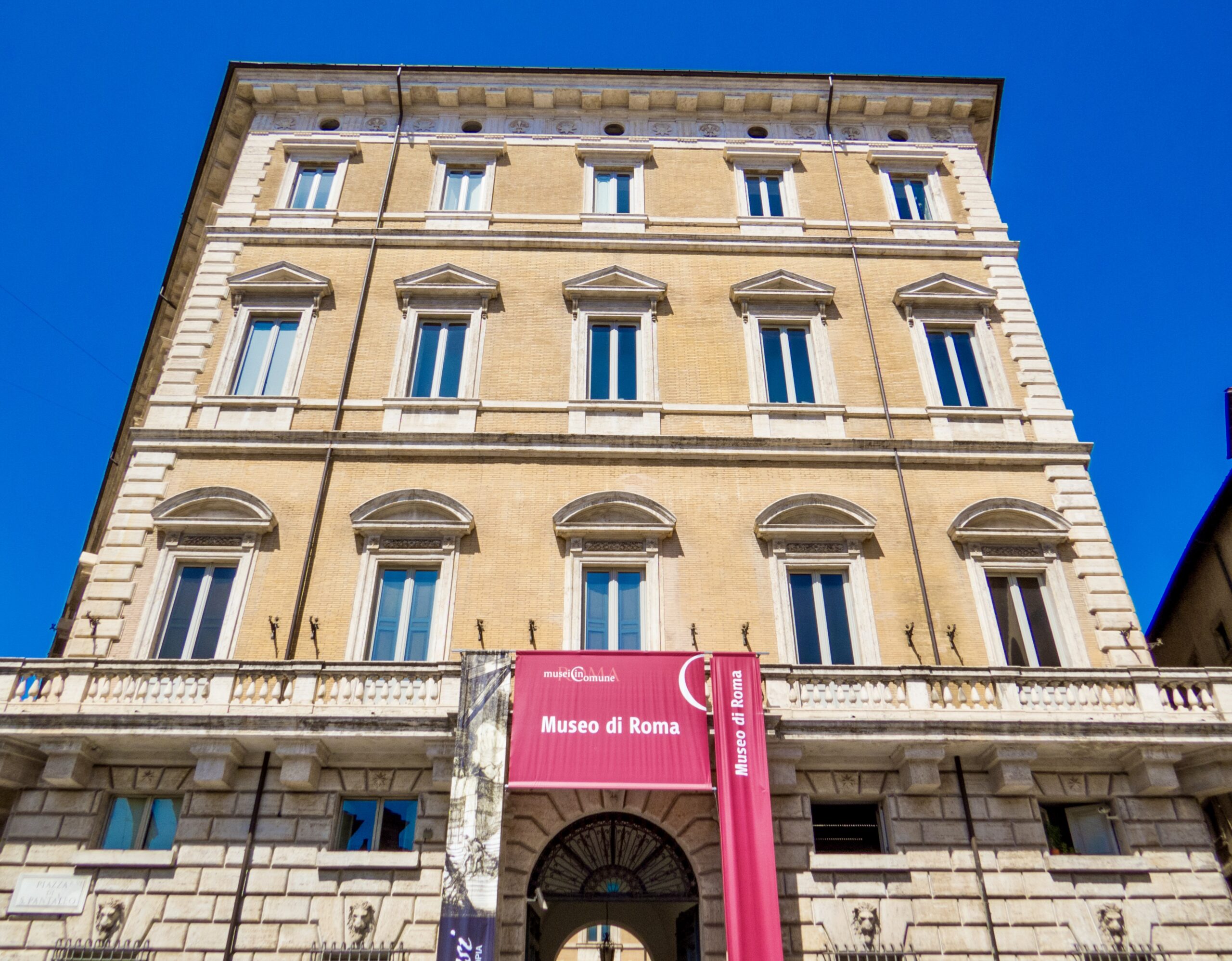
The palace is one of the finest examples of civic architecture from that era It’s a testament to the lavish lifestyle of Rome’s noble families, who benefitted from papal patronage.
Within its walls, the museum boasts an extensive collection that narrates Rome’s social evolution through paintings, furniture, artworks, photographs, busts, and relics from ancient Rome.
You can see how “old” Rome looked long ago and examine models of its famous monuments.
If you are a Rome history buff, this is the museum for you!
>>> Click here to pre-book a ticket
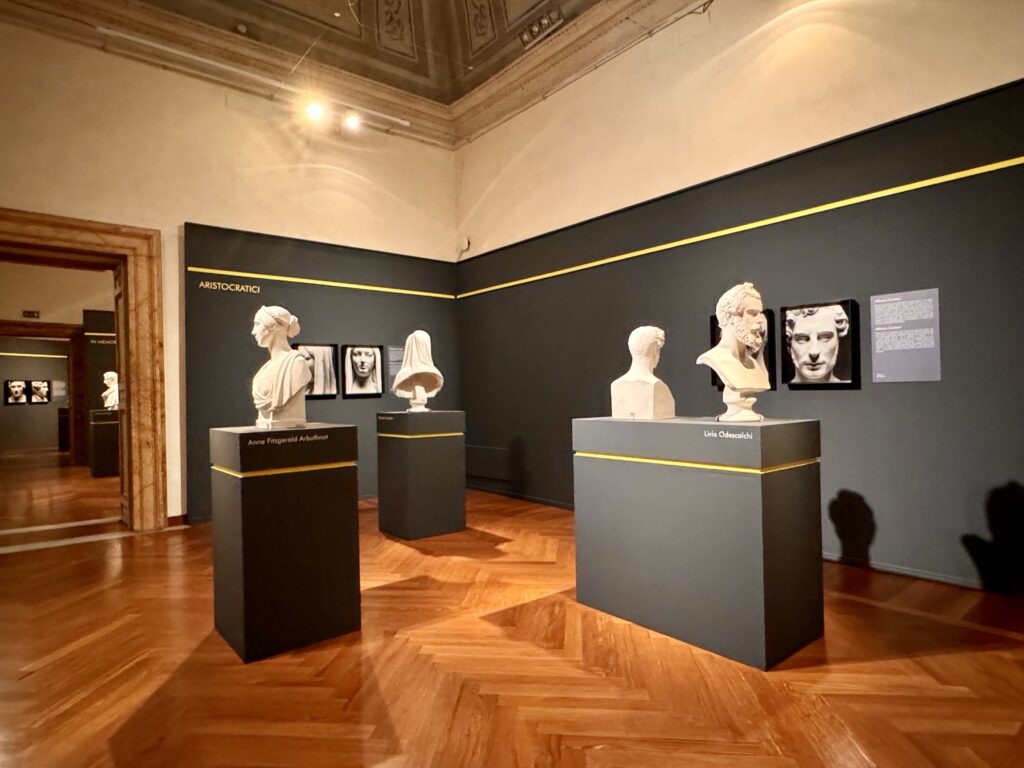
Overview Of Palazzo Braschi
The Museum of Rome is laid out over 20 rooms on four floors. The ground floor houses the ticket office, book shop, and small cafe. You’ll also see some portraits of members of the papal household.
The first floor houses temporary exhibitions. The core of the museum is on the second and third floors.
When you enter the second floor, you have to pick a direction. Rooms 1-9, to the right, are the palace’s public rooms. They house the art collection of the Braschi family and once hosted major galas.
Rooms 10-15, are the private Braschi Apartments. This is where Luigi Braschi and his wife Costanza Falconierei lived in the early 19th century when Luigi served as Mayor of Rome. The artworks here are more intimate and private in nature.
The third floor, Rooms 16-20, focuses on the transformation of Rome and display fragments from the vanished ancient city.
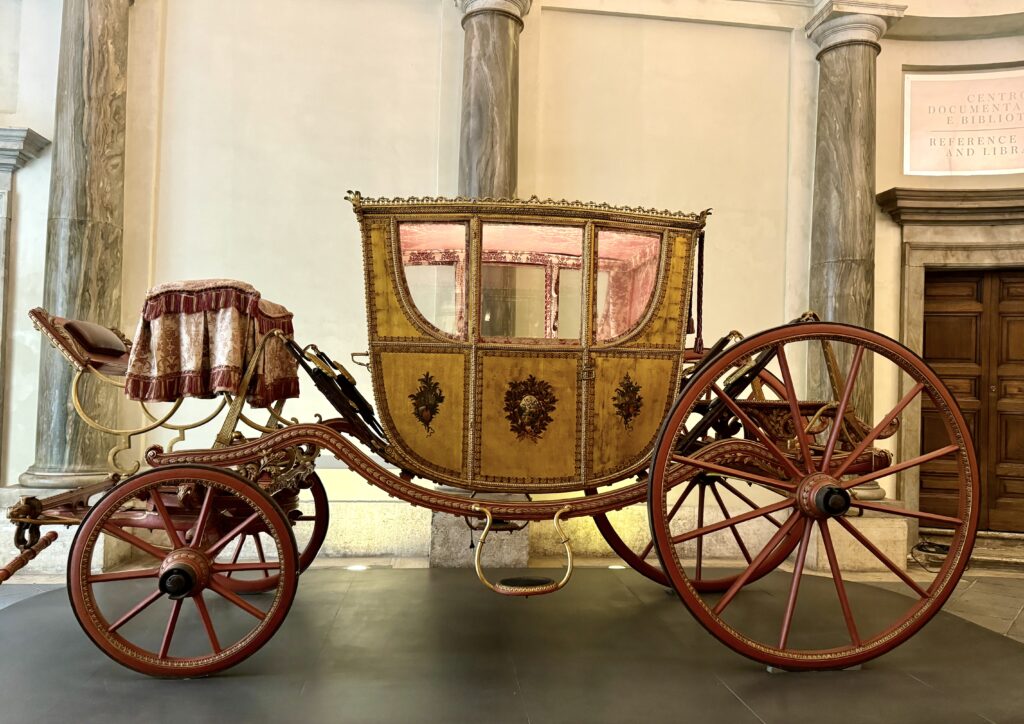
Guide To Palazzo Braschi: What To See
Gala Sedan
This elegant painted and gilded sedan is one of the first things you’ll see in the entrance passage.
Sigismondo Chigi commissioned the carriage for his wedding to Giovanna Medici d’Ottajano, celebrated in Naples in 1776.
The carriage was made and decorated in France with British parts. This type of car was extremely popular in Europe in the 18th century.
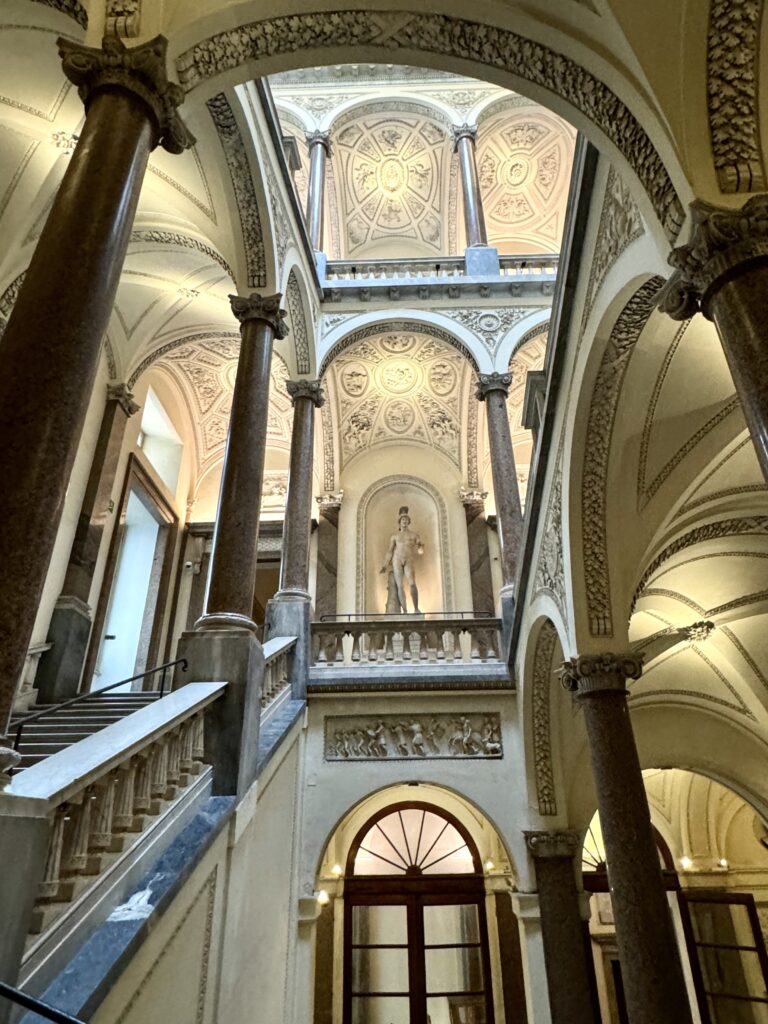
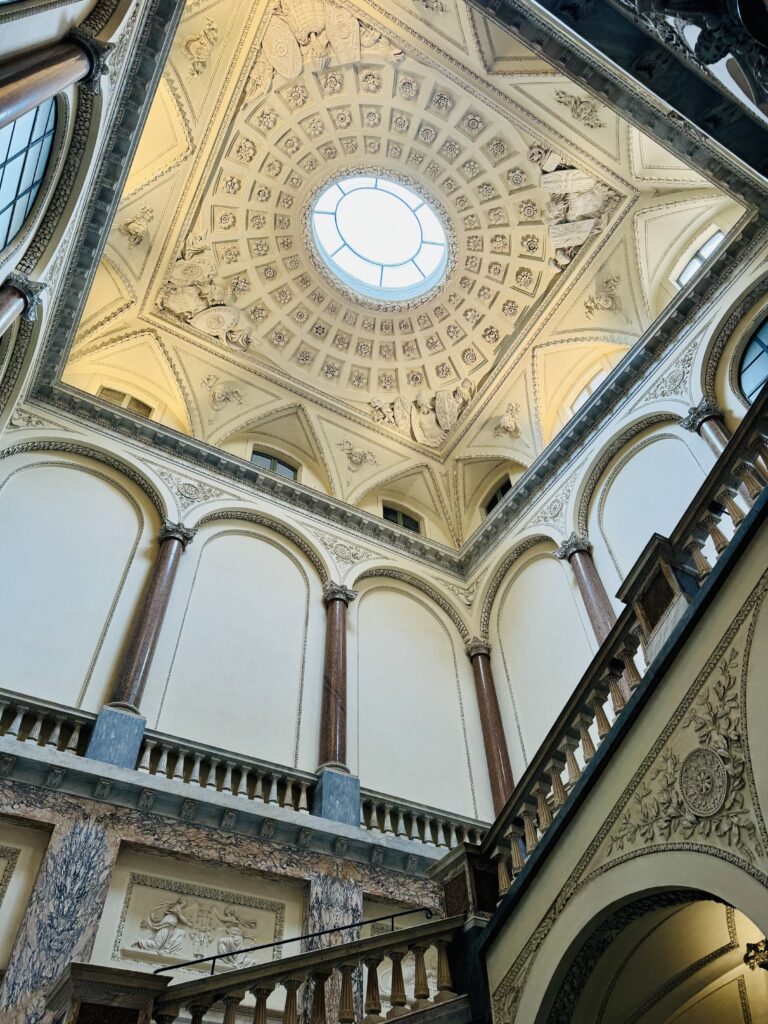
Grand Staircase
The palace’s chief architectural highlight is a grand staircase designed by Giuseppe Valadier, a prominent figure in Roman architecture.
It consists of two flights and 18 granite columns with Ionic capitols. The staircase was designed to create a sense of awe and grandeur, serving as a fitting entrance to the opulent interiors of the palace.
It’s finely decorated with stuccoes and plaster reliefs by Luigi Acquisiti, which were inspired by the myth of Achilles. It bears the coat of arms of the owners.
Square frames tell stories of Homeric epics consistent with the antiquarian tastes of the time. The space also has excellent acoustics.
At the foot of the staircase stands the thundering statue of Neptune, a 2nd century Roman copy after a Greek original. It was once housed in the Vatican Museums and the Capitoline Museums.
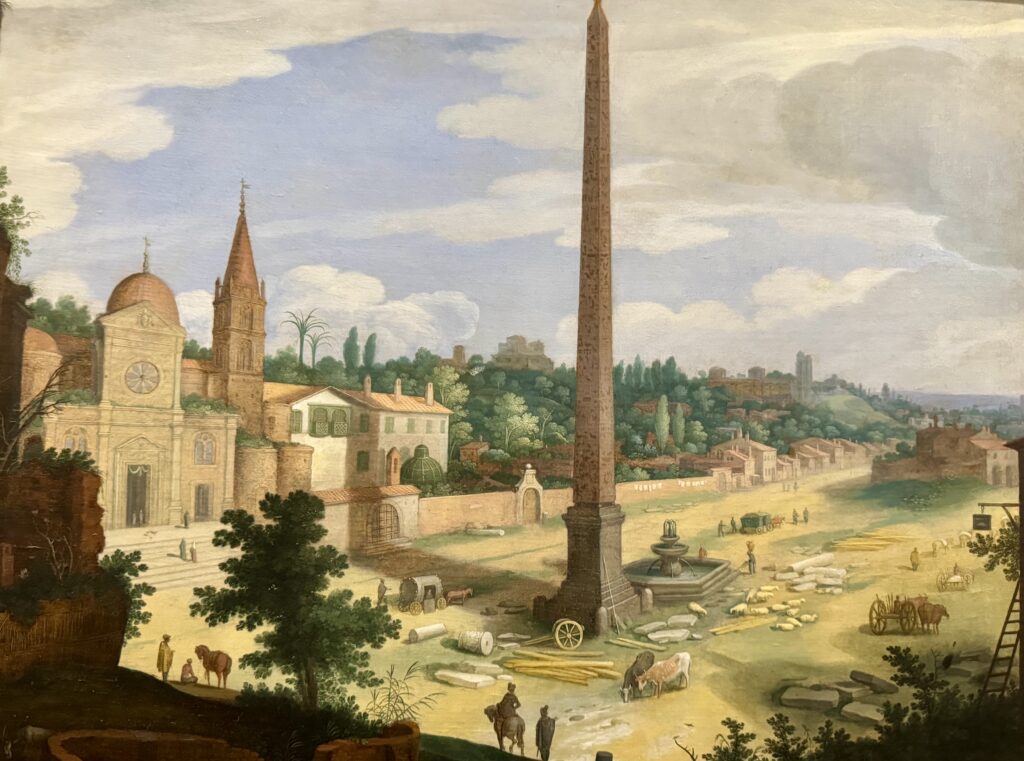
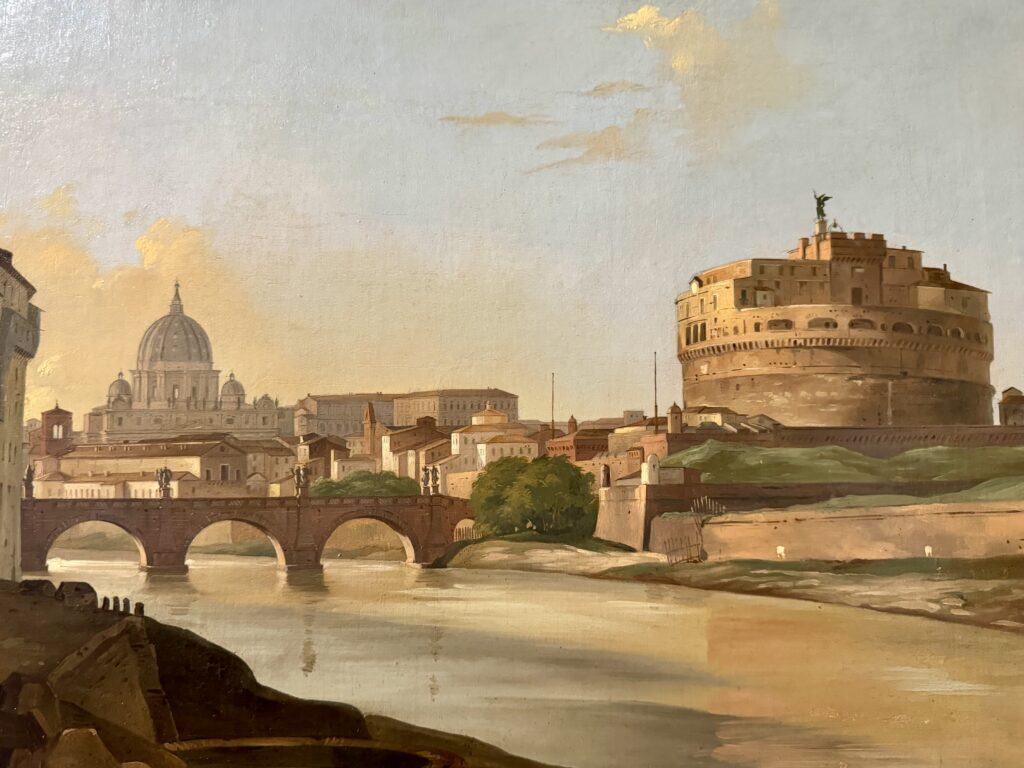
Public Rooms, 2nd Floor
The public rooms display a wide range of sculptures, drawings, prints, and photographs.
This collection vividly chronicles the public and official aspects of Rome’s history, culture, and daily life across several centuries.
Notable highlights include artworks that depict views of Rome and its monuments. They showcase its transformation over time, from a country town to a city.
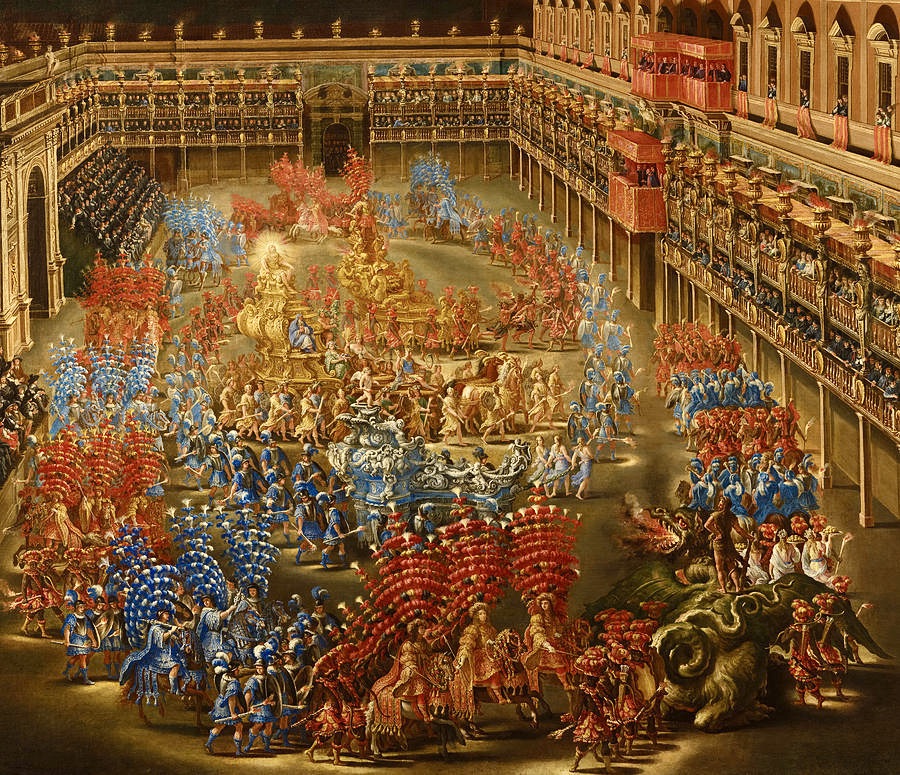
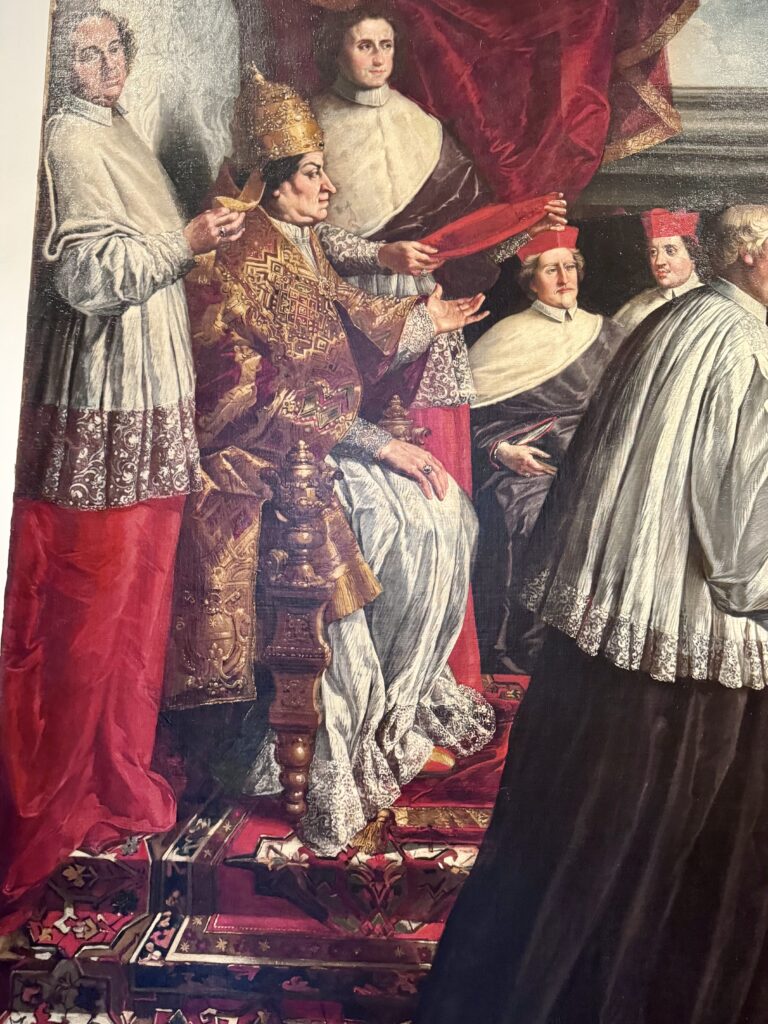
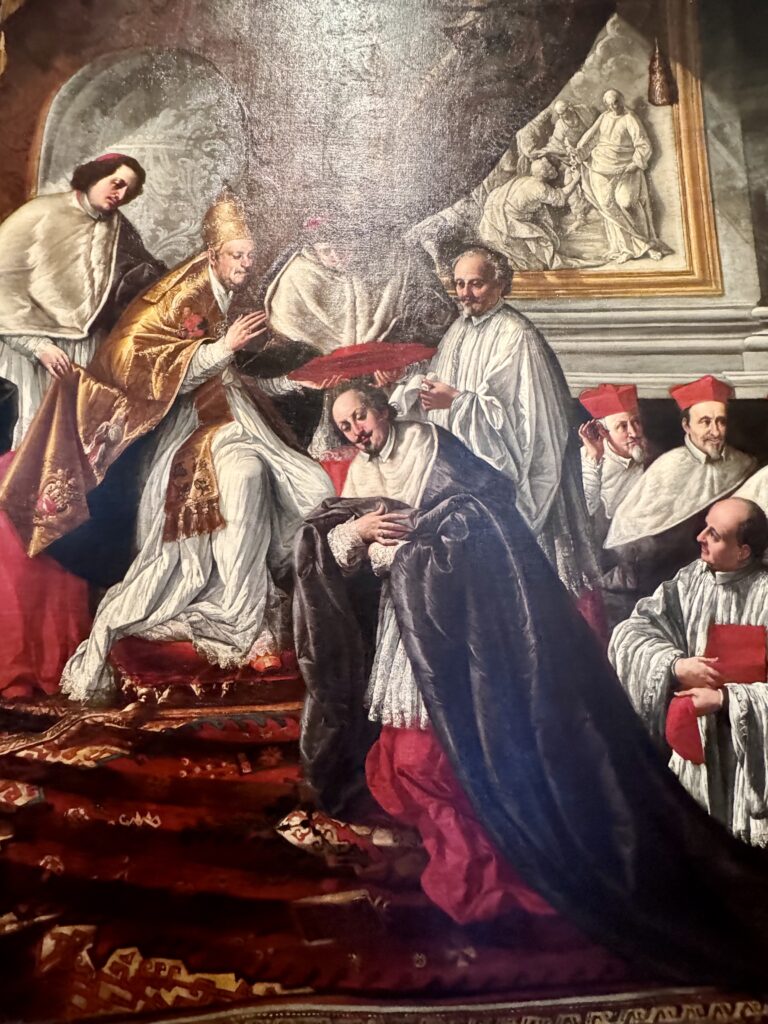
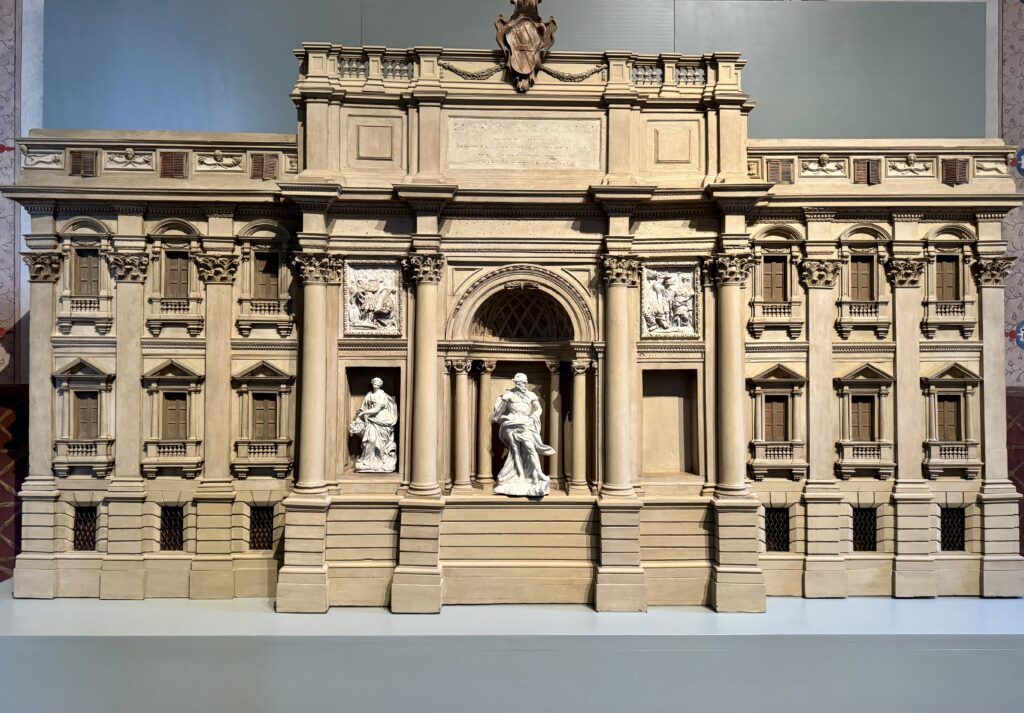
Some artworks capture significant historical events, social scenes, and prominent figures who have shaped the city’s legacy.
The museum’s collection also extends to costumes and fashion, providing insight into the evolving styles and societal norms of Roman life.
One of the most famous pieces is a large painting dedicated to Queen Christina of Sweden. It depicts the grand show put on at Palazzo Barberini in 1656.
Christina was a remarkable figure in European history, known for her abdication of the Swedish throne in 1654, her conversion to Catholicism, and her subsequent move to Rome.
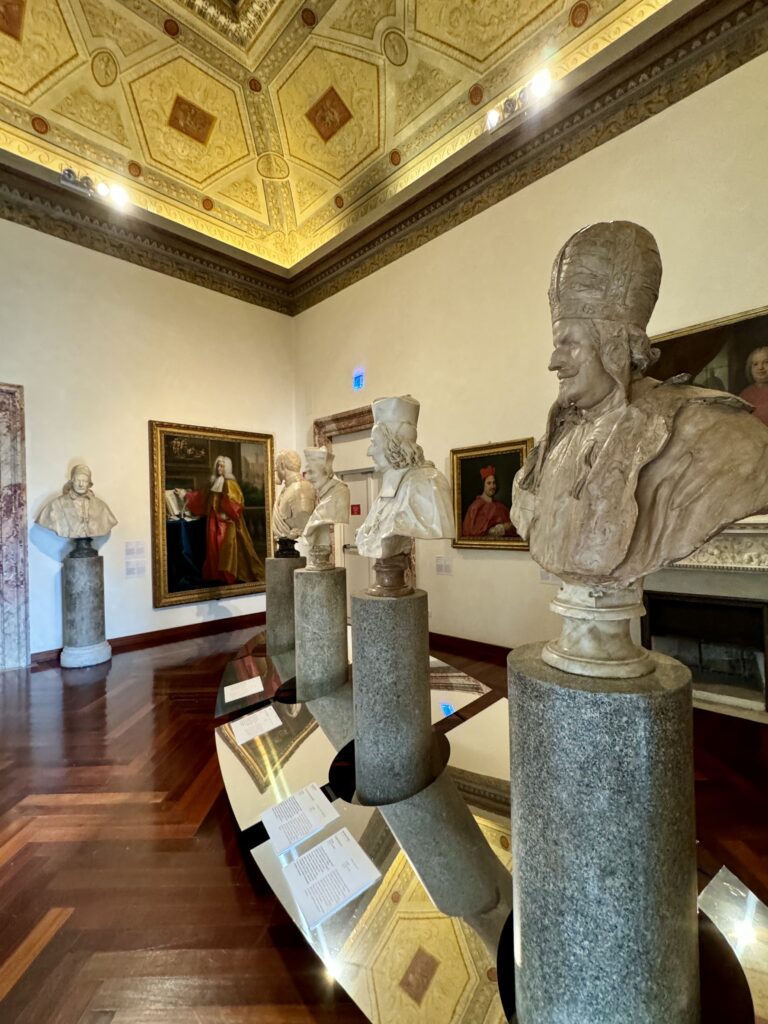
Private Apartments, 2nd Floor
These rooms are adorned with elaborate frescoes, stucco work, and period furnishings that together create an immersive historical experience.
This is where you’ll find the faces and histories of popes and cardinals from the 16th through the 18th centuries.
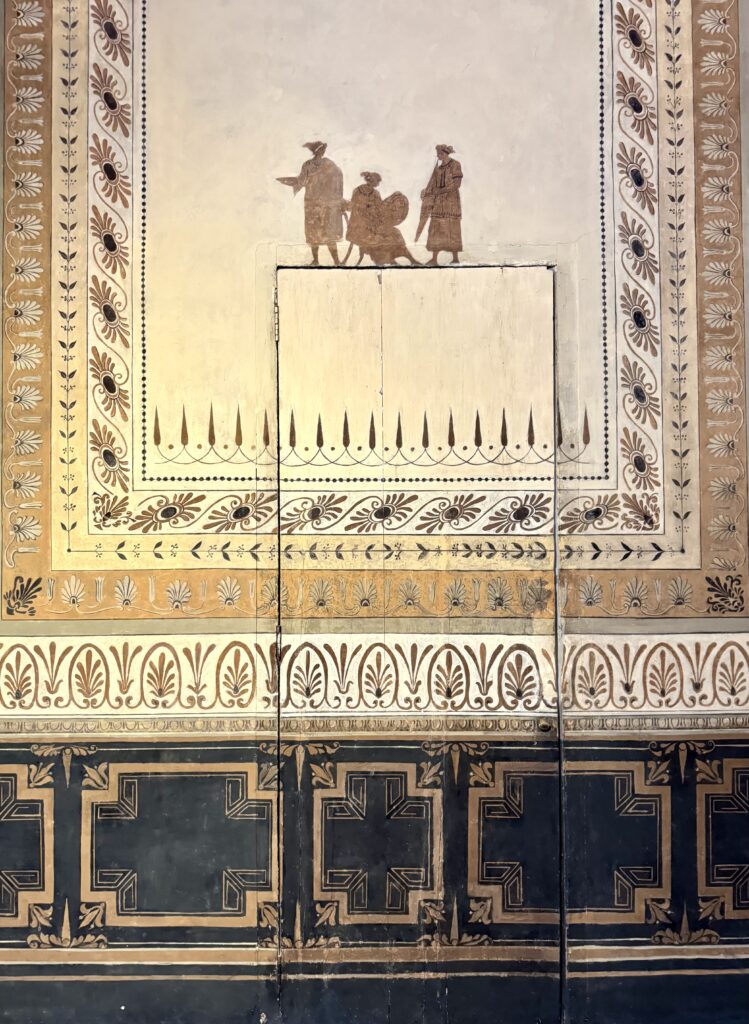
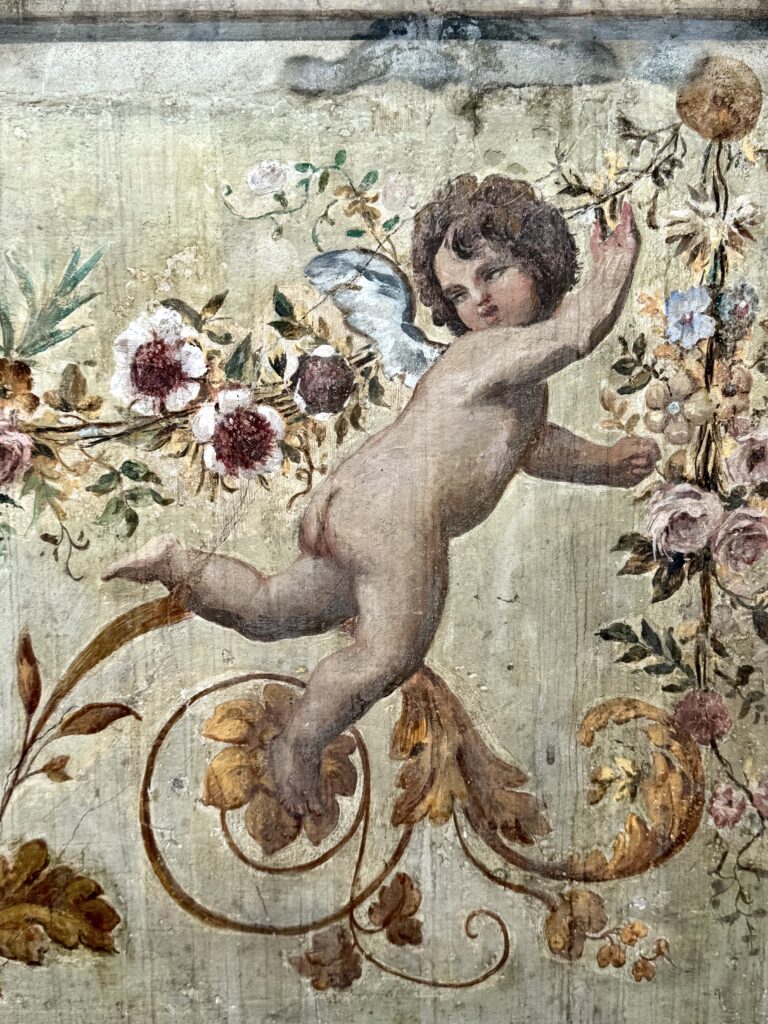
The walls and vaults of the rooms are decorated with mythological and historical scenes.
You will also find a lovely small Etruscan Room with ochre and black wall paintings. It reflects the 18th century obsession with Greek vase painting, at the time mistakenly thought to be Etruscan.
This was a room where people played cards.
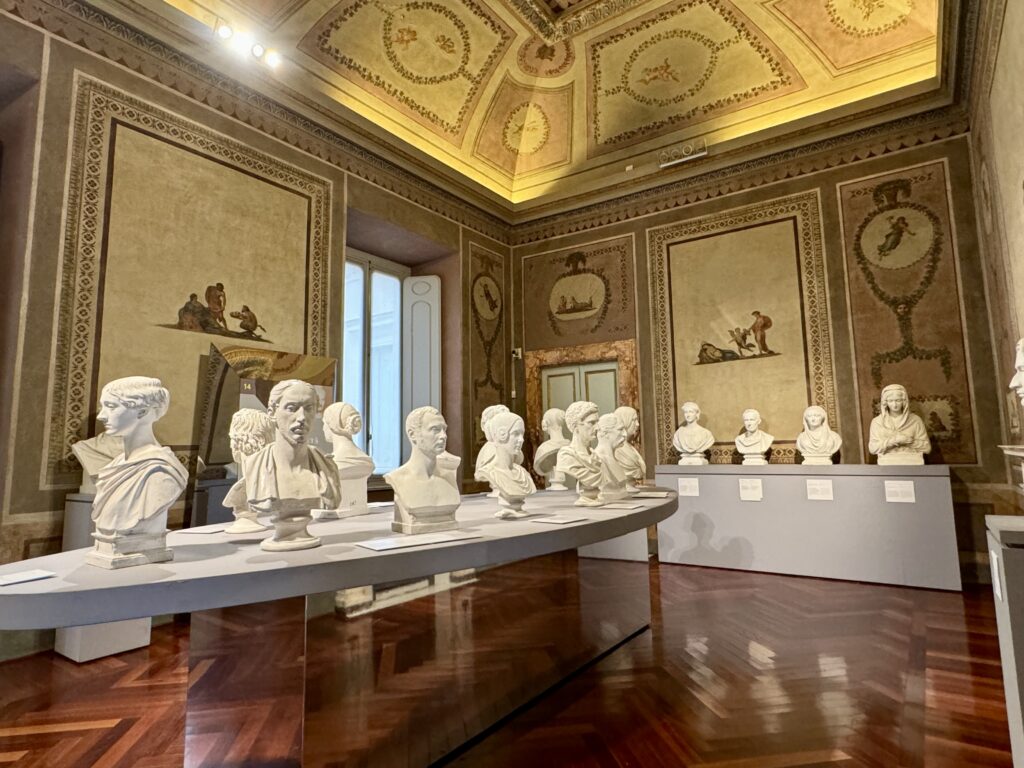
3rd Floor
The third floor features five rooms dedicated to Rome’s urban evolution. You will also have amazing views of Piazza Navona from the windows. There are rooms with grotesque motifs and landscapes.
One highlight is the Nemi Room. It combines the great tradition of 16th century perspective illusionism with the the classicist landscapes of the 17th century.
The entire room is swathed with landscape frescoes depicting Lake Nemi, the Braschi domain, and the Roman countryside.
The scenographic effect of the illusory representation was above all supposed to amaze the guests with a coup de théâtre, elegant and enveloping, capable of surprising and enchanting anyone who had access to the duke’s rooms.
The Oval Room is another beauty. It was used as a drawing room and features a stunning grotesque style ceiling fresco.
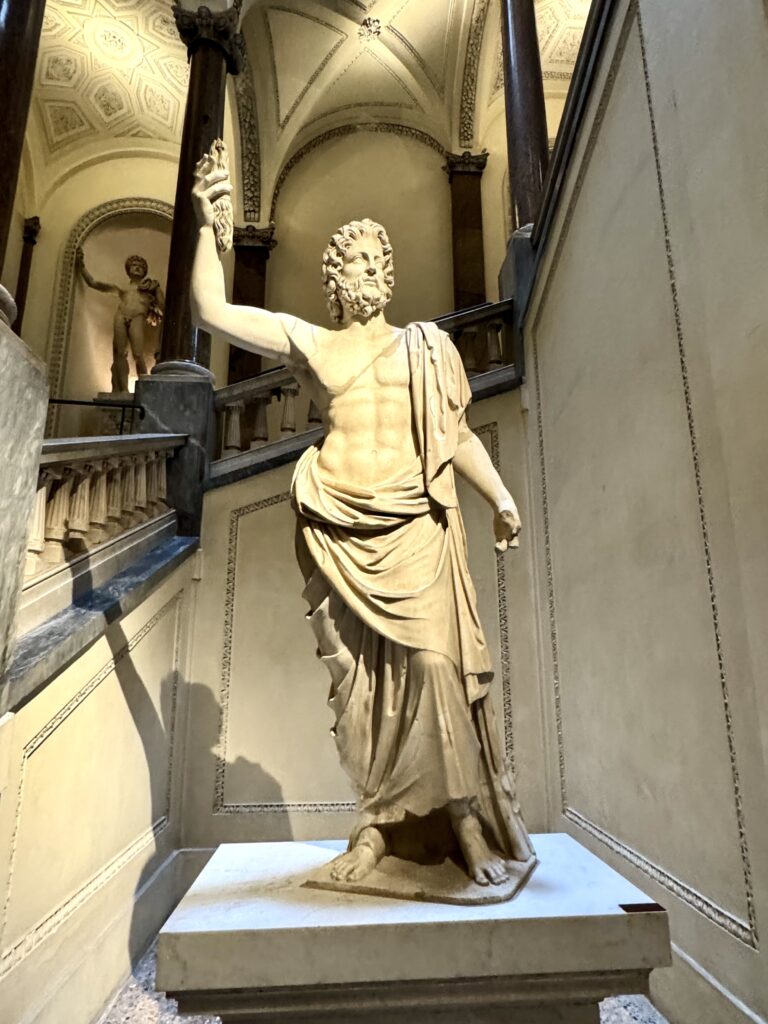
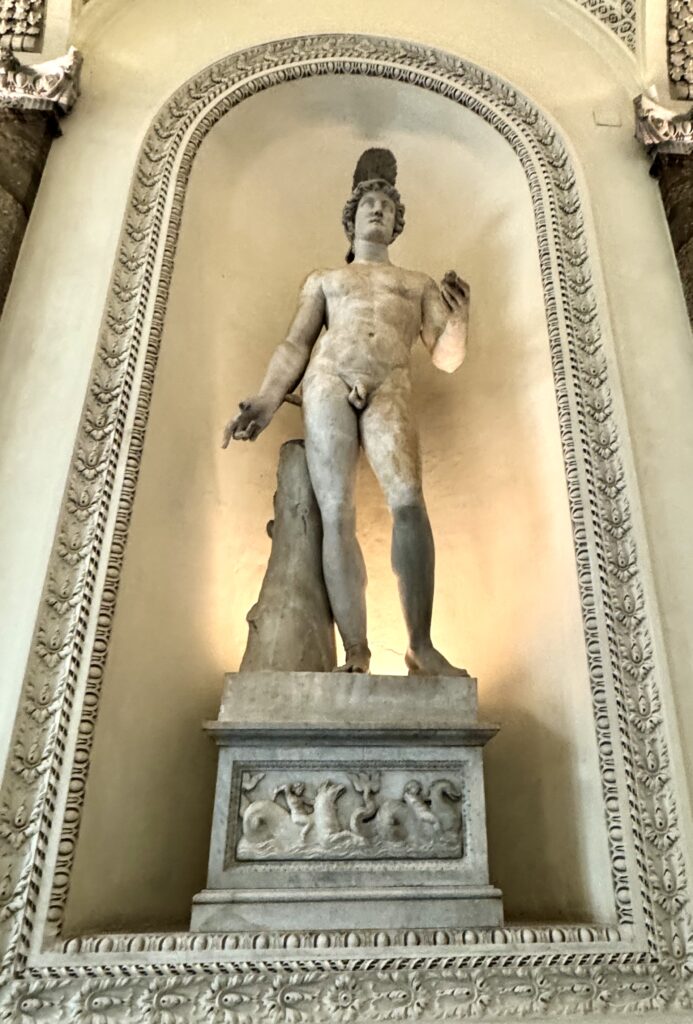
Practical Guide & Tips For Palazzo Braschi
Address: Piazza di San Pantaleo, 10, Piazza Navona, 2
Hours: Open Tuesday through Sunday from 10:00 am to 7:00 pm. On Monday, open from 10:00 am to 6:00 pm.
Admission: € 16.00 for temporary and permanent exhibitions. You can visit for free with the Roma Pass. And the pass is on sale at the ticket counter.
Tips: There is a free place to check your coat and/or bags.
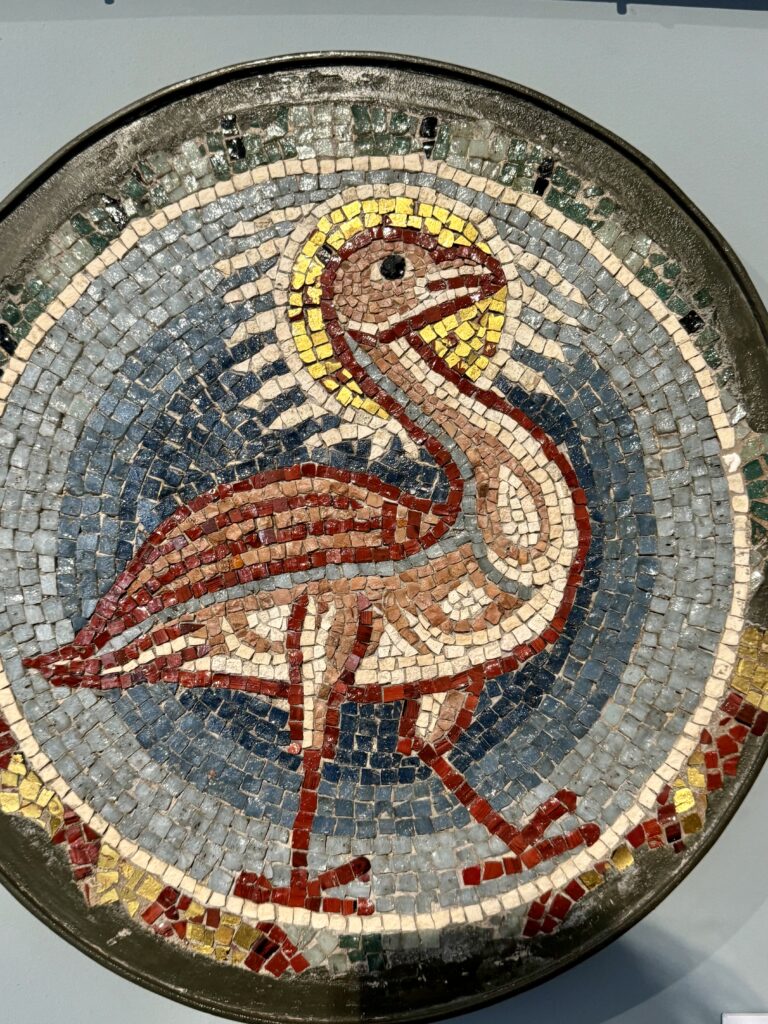
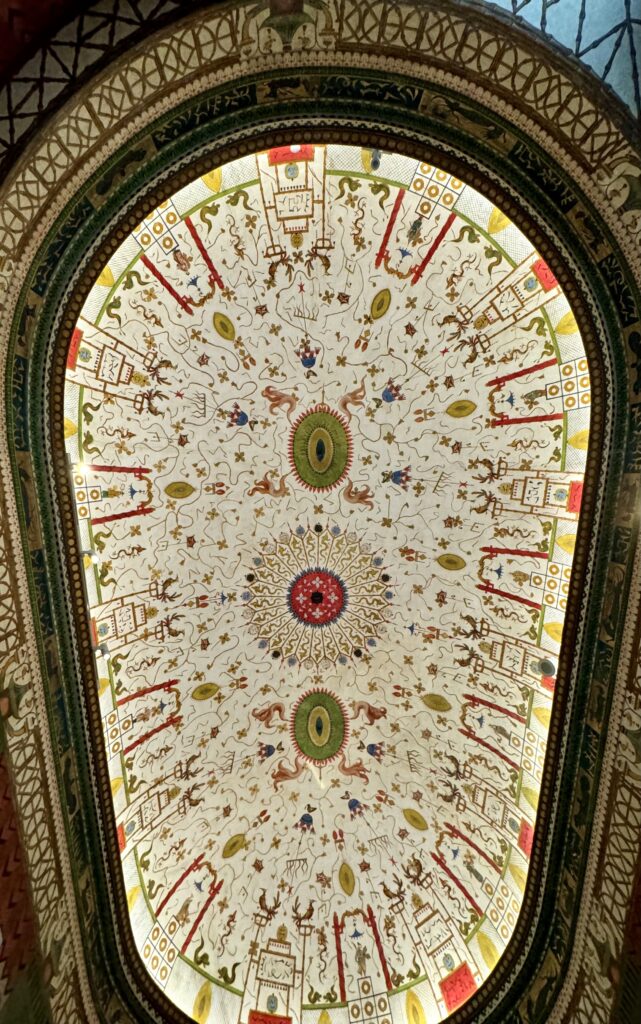
Is Palazzo Braschi Worth Visiting?
Palazzo Braschi is not your typical art museum. It’s really more of a history museum. So, you’ll have to decide if it’s worth the price of admission and whether it suits your personal taste.
If you want to see great masterpieces of painting and sculpture, the museum may be skippable. Other museums in the vicinity — Palazzo Altemps, Palazzo Spada, and Palazzo Barberini — are more worthwhile.
On the other hand, if you are a student of history and want to see how Rome evolved over time, it’s all captured here.
As an added benefit, there will be zero crowds at this under the radar museum. And you have free admission with the Roma Pass.
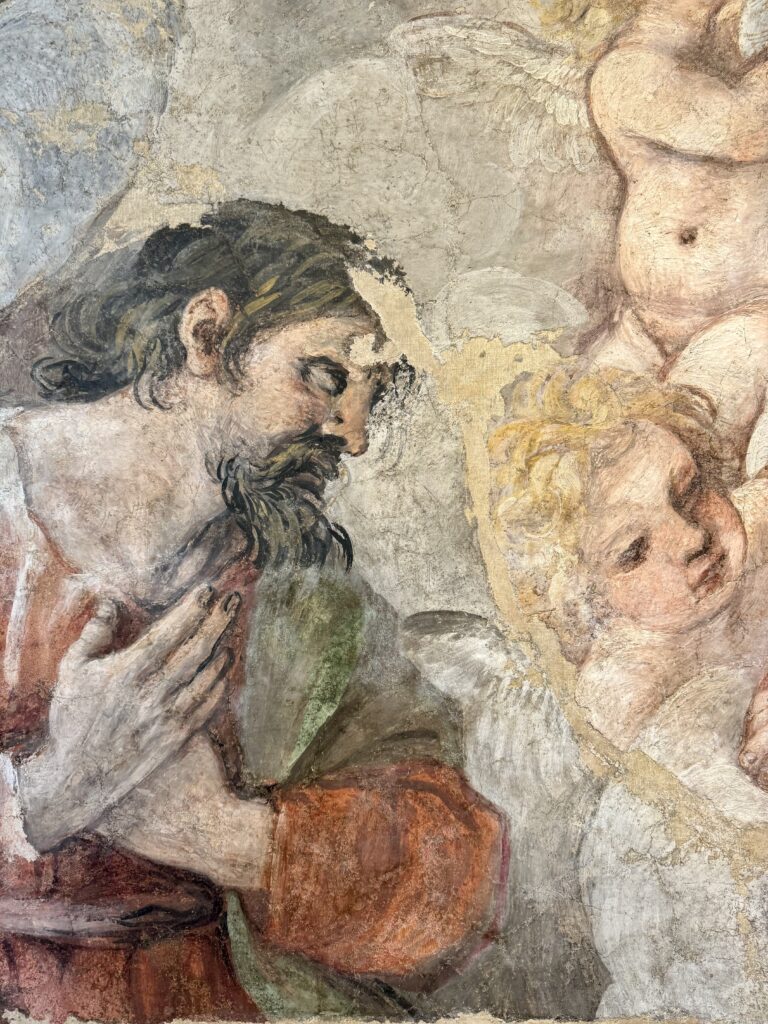
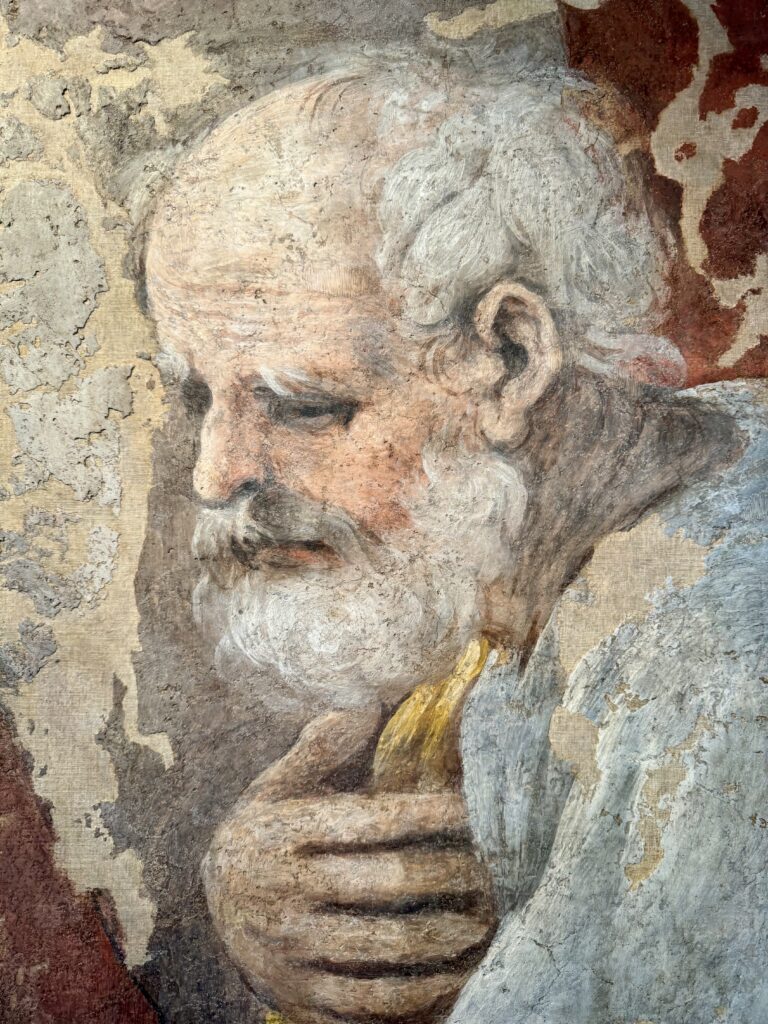
I hope you’ve enjoyed my guide to Palazzo Braschi, the Museum of Rome. You may find these other Rome travel guides useful:
- 8 Ways To Spend 1 day in Rome
- 2 Days in Rome Itinerary
- 3 Days in Rome Itinerary
- 4 Days in Rome Itinerary
- 5 Days in Rome Itinerary
- Hidden Gems in Rome
- Best Day Trips From Rome
- Rome’s Palace Museums
- Best Museums in Rome
- Must See Archaeological Sites
Pin it for later.

